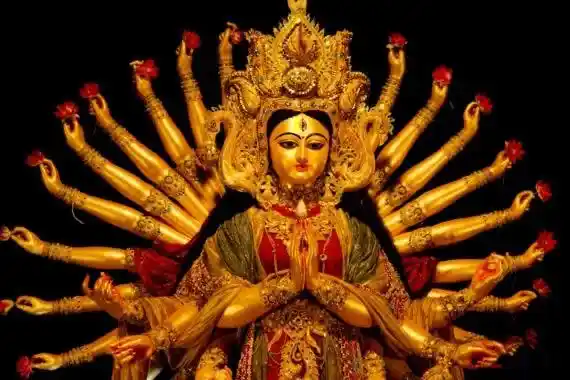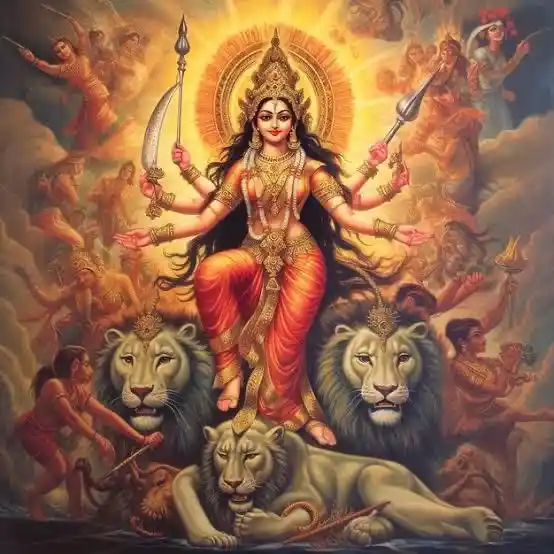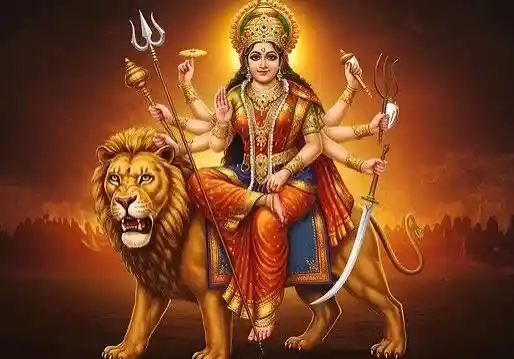
The origins of Navratri are tied to mythology. One well-known legend involves Mahishasura, a demon who received a boon that protected him from harm by any man or god. With this power, he terrorized both the heavens and the earth. The gods, unable to defeat him, combined their powers to create the supreme force: Goddess Durga. Riding a lion and wielding weapons from the gods, Durga fought Mahishasura for nine days and nights. On the tenth day, she finally defeated him, bringing peace and order back to the world. This day is known as Vijayadashami or Dussehra, representing victory and justice. Another legend connects Navratri to Lord Rama, who worshipped Goddess Durga for nine nights to seek her blessings before confronting Ravana. His victory is also celebrated as Dussehra in many areas.
While these mythological stories explain why people celebrate Navratri, the festival also has deep spiritual meaning. Each of the nine days is dedicated to one of the nine forms of Goddess Durga, known as Navadurga. These forms represent qualities like courage, wisdom, prosperity, compassion, and enlightenment. Worshippers believe that by honoring each form, they invite these qualities into their lives. Fasting during Navratri is both a religious practice and a way to cleanse the body and mind. This helps devotees focus on prayer and self-discipline. The festival is seen as a spiritual journey. Each day brings participants closer to inner strength and clarity, guiding them from darkness to light and ignorance to wisdom.

Navratri is celebrated in different ways across India, showcasing the country’s diverse culture. In Gujarat, the festival features Garba and Dandiya, where people dance in colorful outfits all night, expressing their devotion through rhythm and joy. In West Bengal and the eastern states, Navratri coincides with Durga Puja. During this time, beautiful idols of Goddess Durga are worshipped in decorated pandals before being immersed in rivers or seas. In the north, people perform dramatic versions of the Ramayana, called Ramlila. This ends with the burning of large effigies of Ravana, Meghnath, and Kumbhakarna on Dussehra. In South India, families set up Golu displays, decorating steps with dolls and figurines that represent gods, mythological stories, and cultural themes. This transforms homes into miniature temples of learning and tradition. Each region has its own customs, but all highlight devotion, strength, and the victory of righteousness.

In Telangana and Hyderabad, Navratri is made even more special by the celebration of Bathukamma, the state’s floral festival that happens during this time. Women come together to make beautiful flower arrangements stacked in tiers using seasonal flowers like marigolds and gunuka. These arrangements are honored and taken to water bodies in a grand procession along with singing and dancing. While Navratri pays tribute to Goddess Durga and her strength, Bathukamma focuses on nature, fertility, and life itself. This makes the festival in Hyderabad a unique mix of devotion and cultural pride. During this time, the city bursts with colors, rituals, and community gatherings that bring people closer together.

The importance of Navratri goes beyond rituals and celebrations. At its core, it teaches us that just as Goddess Durga defeated Mahishasura, we must learn to conquer the demons inside us: ego, anger, greed, and fear. The festival reminds us that true strength comes from within. With faith, discipline, and positivity, we can overcome any obstacle. Navratri is more than a religious celebration; it’s a time for renewal, reflection, and embracing the divine energy within us all. It brings together people from different regions and traditions, celebrating the lasting message that good always triumphs over evil and that light will always win over darkness.











